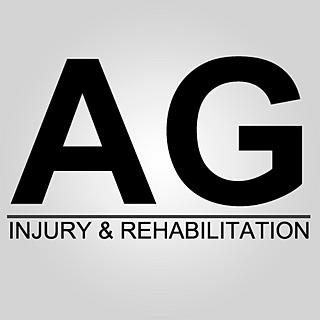What exercises produce the greatest muscle activation of the Hamstrings?
- Arun Gray
- Mar 17, 2016
- 3 min read
Updated: Feb 7, 2022
The Hamstrings are argueably the most frequently injured muscle group in the majority of sports due to a number of factors. Two of the most common are a lack of strength in the muscles (especially if imbalanced compared to the quadriceps) and poorly rehabilitated previous injury(s).
To signifiantly reduce the chance of injury, athletes must condition their hamstrings to allow them to be able to cope with the forces they are put through during their performances. So what do you do to strengthen a player's hamstrings? A study by Tsaklis et al (2015), published by the Open Access Journal of Sports Medicine, compared muscle activation readings from an EMG that were produced when subjects performed classic hamstring exercises. They observed and compared the activiation of both the Bicep Femoris and Semitendonosis during ten repetitions of ten different hamstring loading exercises in 25 elite track and field athletes.
The Exercises
Lunge
Starting from standing, the athlete must lunge forward to a 90 degree angle of flexion at their knee and hip.

Single Leg Romanian Deadlift T-Drop
Standing on one leg, the athlete maintains a neutral lumbar spin and flexes the hip to its end range. The rear non-standing leg remains straight and moves backwards as the trunk moves forwards.

Kettle Bell Swings
a 12kg was used. The athlete bends forwards to pick up the KB with both hands with the knees flex at between 10-15 degrees. The athlete then swings the KB back between their legs, then quickly extends the hips and explosively swings the KB to chest level. Knees and hips should be fully extended at this point.

Bridge
The athlete begins lying in the supine position with their arms by their side and knees bent to 90 degrees. One knee is then lifted off the ground and placed over the opposite knee. The hips are then lifted off the ground until the knees, hips and shoulders and in a straight line.

TRX Exercise
The athlete begins in a supine position with both feet in the TRX. The pelvis is lifted and maintained in that position with the knees straight. Each knee is flexed alternatively, slowly and controlled.

Hamstring Bridge
Begin in a supine position with their arms by their side, knees bent and heels on a chair. The hips are lifted off the ground until the knees, hips and shoulders are in a straight line. This position is held for 5 seconds before lowering.

Hamstring Curl
Athletes stand and perform a slow knee flexion:hip extension against a resistance band (low load).

Nordic Exercise
Athletes start by kneeling on a mat while a partner holds their ankles from behind. The athlete then slowly lowers their body forwards; keeping a controlled position and maintaining neutral hip flexion-extention (keeping their body in a straight line). When the athlete reaches the lowest position possible, they return to the starting position to begin the next repetition.

Swiss Ball Flexion
Athletes start in a prone position. An exercise ball is held on their gluteal muscles. The athlete must alternatively flex their knee to hit the ball with their heels. This should be done as rapidly as possible.

Sliding Leg Exercise
Athletes start lying in the supine position on the floor with their arms by their side, knees bent and their heels on two seperate materials that can slide on the floor (material or paper plates can be used). The athlete keep the pelvis off the floor whilse keeping one leg off the floor. The other is used to weight-bare on the sliding material (working leg). When the knee of the working leg is straight, the leg is curled back to 90 degrees.

Results

As displayed by the graph below, the sliding leg exercise produced the greatest muscle activation in both the biceps femoris and the semitendinosis. The exercises were grouped into three categories:
Low intensity exercises (<50% MVIC)
- Lunge
- Single Leg Roman Deadlift T-Drop
- Kettle Bell Swings
Medium Intensity (50-80% MVIC)
- TRX
- Hamstring Bridge
- Nordic Exercise
- Hamstring Curl
High Intensity (>80% MVIC)
- Swissball Flexion
- Sliding Leg Exercise
*MVIC = Maximal voluntary isometric contraction
The study concluded that some exercises selectively activated the lateral and medial distal hamstrings. Low, medium and high intensity exercises were demonstrated. This information enables clinicians, S&C coaches and therapists to better understand intensity and muscle-specific activation during hamstring muscle rehabilitation. These results may be useful in desiging progressive strengthening and rehabilitation and prevention programmes.







Comments